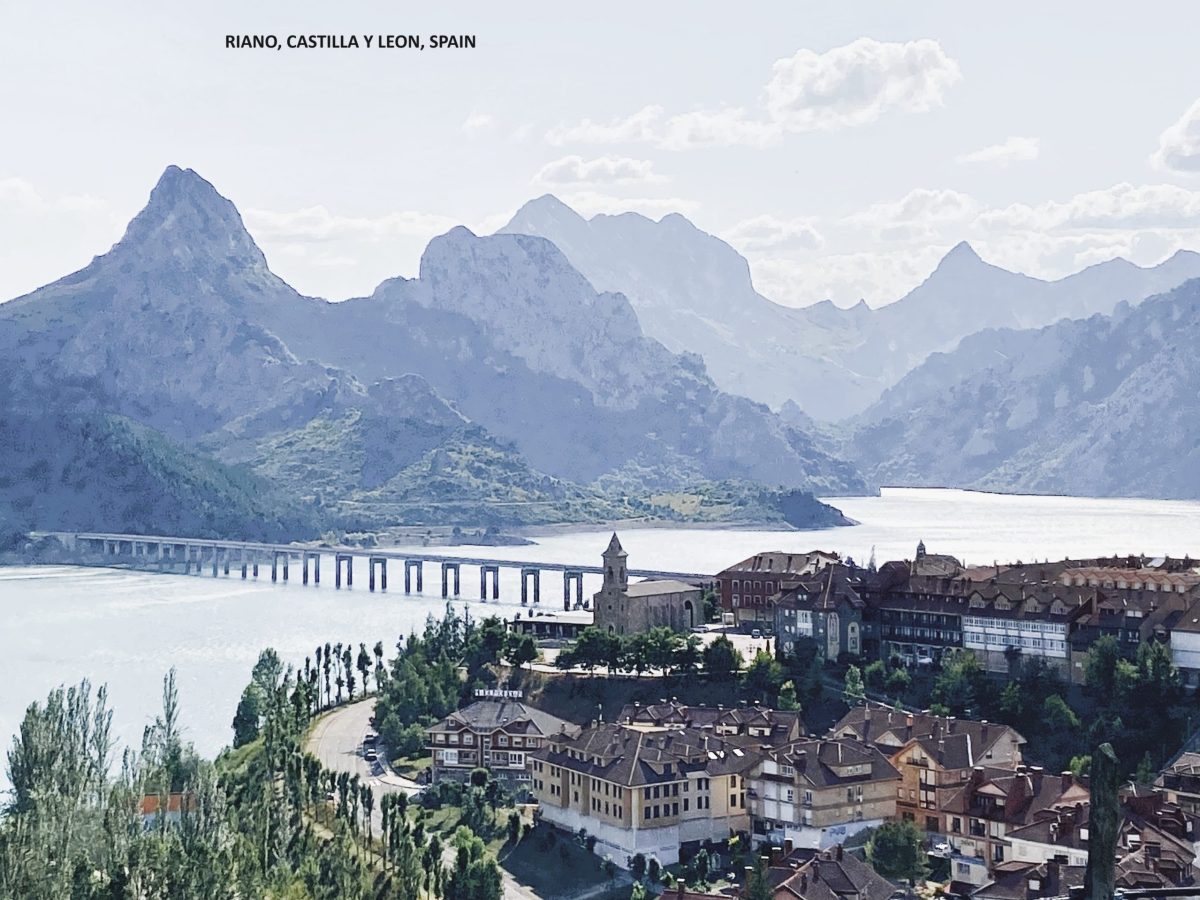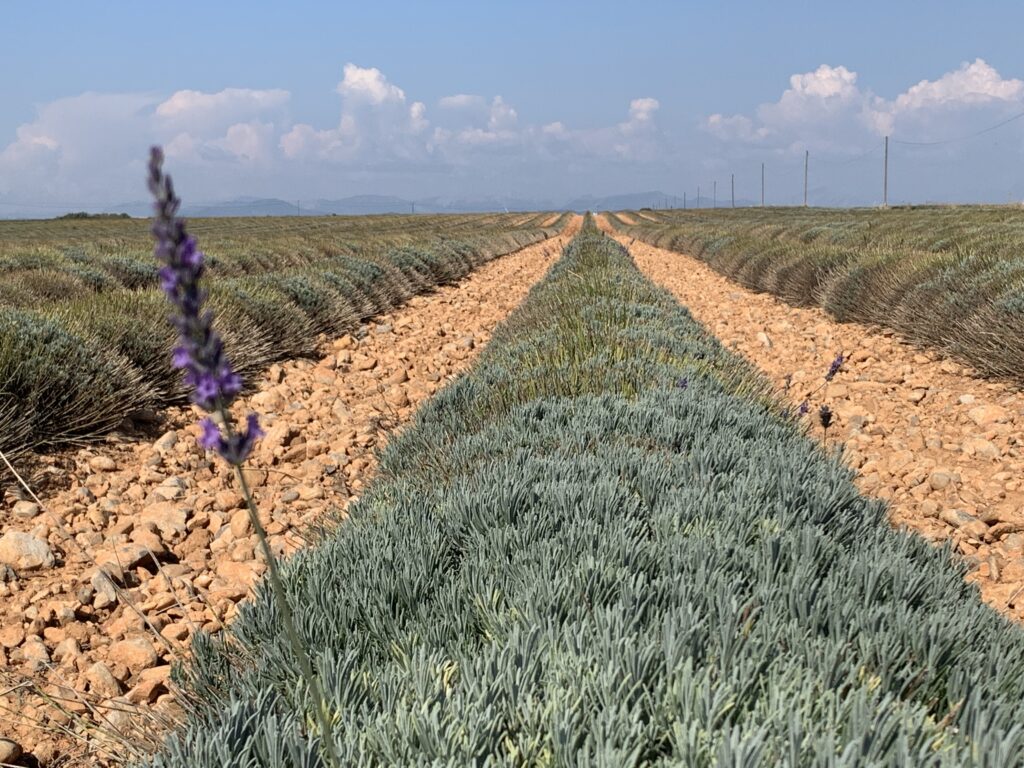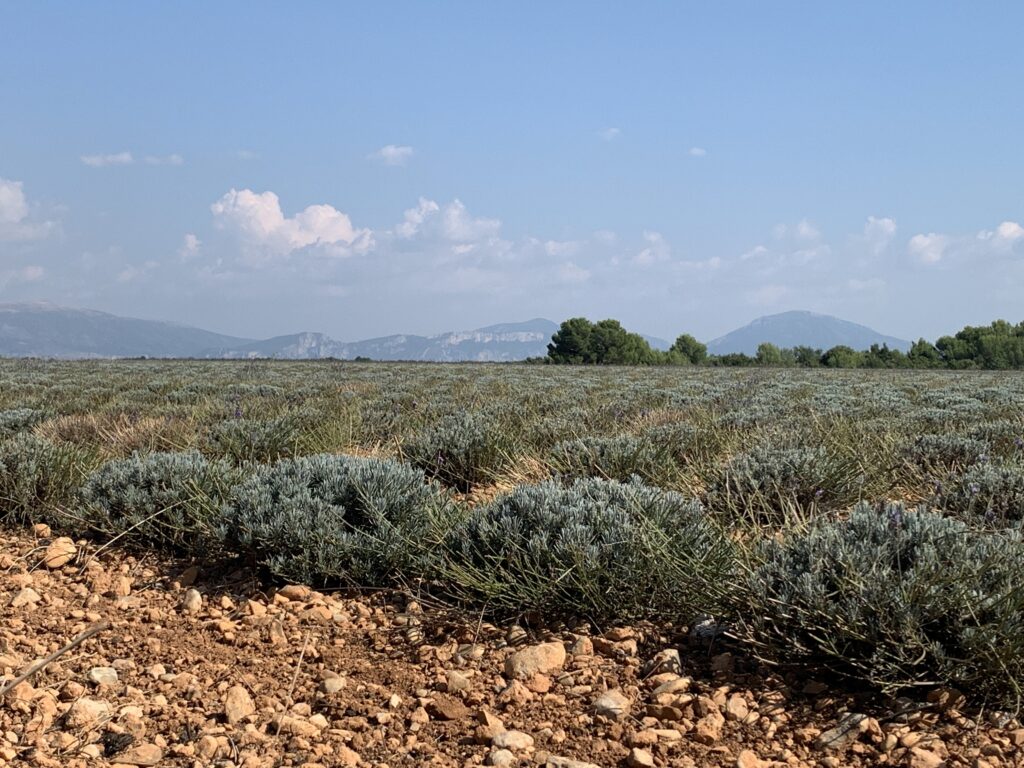Talk about being blessed. If La Vogue was an amazing experience, the next stop at Moustiers Sainte Marie was out of this world.
We took our time over the 85 mile journey, avoiding all toll roads and driving across the Valensole Plateau. For miles in every direction there was little else but large fields of Lavender interspersed with the occasional olive orchard. Unfortunately the Lavender was not in bloom (we’d missed it by a month) but it wasn’t difficult to imagine how magnificent these fields would have looked just a few weeks ago. Beautiful.
Moustiers Ste Marie is a small village of some 700 people in the Natural Parc Regional du Verdon. Dating back to the 5th century it is perched in a semi circle of rocky cliff at the entrance to the Gorges du Verdon (the largest canyon in Europe) and it’s setting is as attractive as the place itself with spectacular views as much from the foot of the village looking up as from it’s heights looking down over the rooftops and across the Maire Valley.

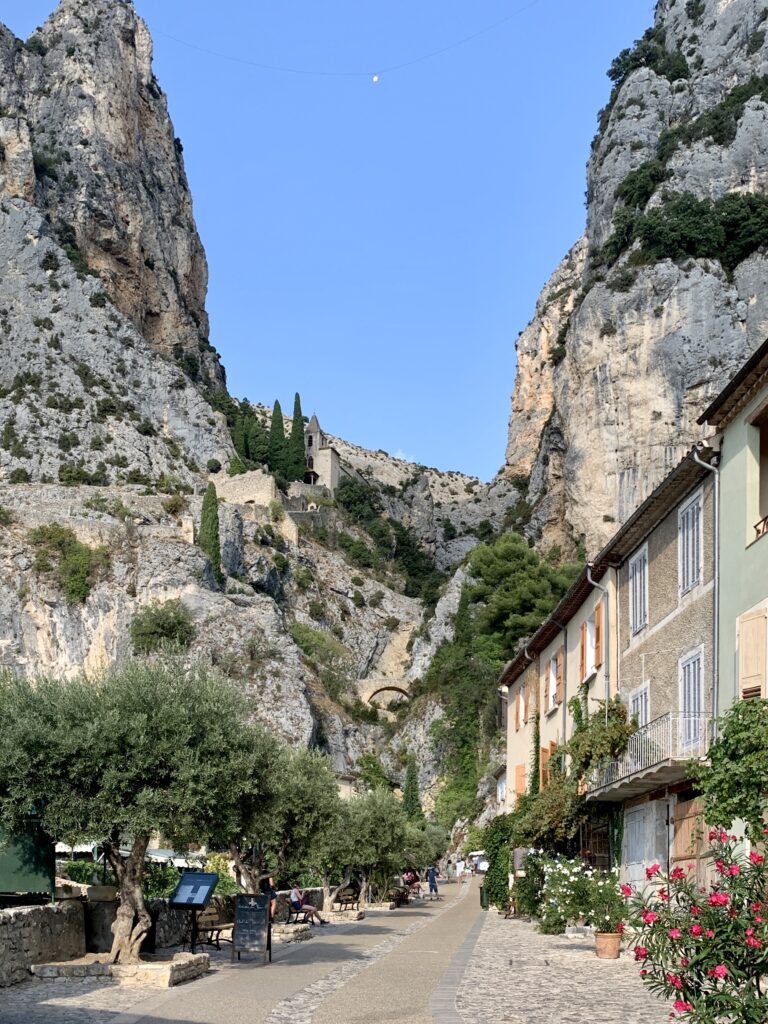
See the star? 
That’s the Chapel
It is another plus beau village du France (that’s two in one day); full of charm, narrow streets, little squares, faience workshops, cafes and restaurants; all dominated by the 12th century four storey bell tower of the Notre Dame de l’Assumption Church (which sits in a pretty square in the centre of the village with an unmissable fountain). It’s very much a tourist town now and busy.

Typical lane 
Notre Dame de l’Assumption 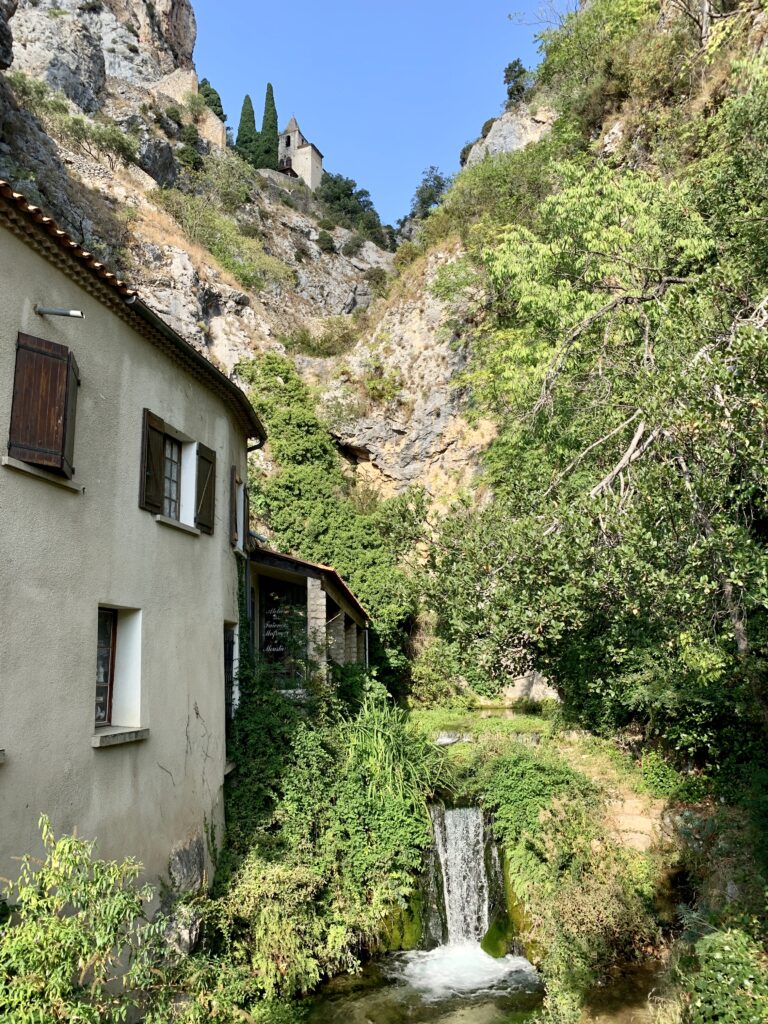
Waterfall in town centre
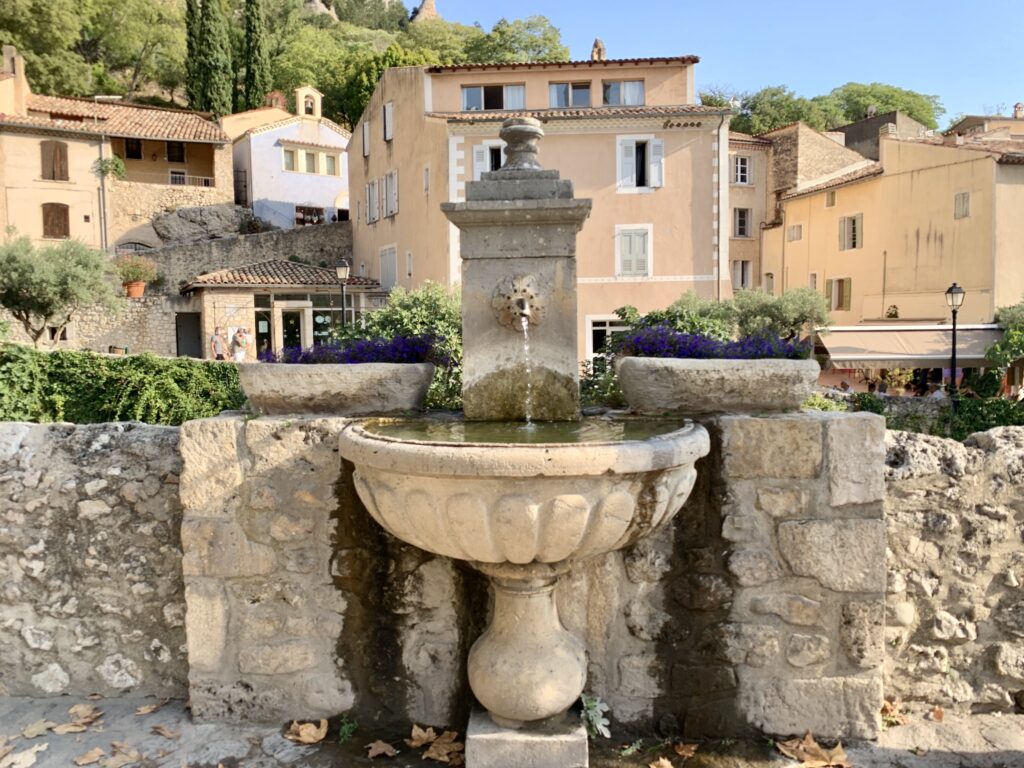
The whole town looks a bit like a nativity scene with a 1.25 metre gilded gold star suspended by a chain high in the sky above another religious monument sitting in the cliffs at the back of the village. This is the Chapel of Notre Dame du Beauvoir. There is a legend concerning the star which was related by the poet Mistral. He tells of a knight of Blacas who after being captured by the Saracens in a 12th century crusade swore that if ever he managed to return home he would hang a star up over the chapel in honour of Saint Mary. So it came about.
The high spot of the village for me (and please forgive the pun) is this small chapel. It’s a beautiful little chapel in its own right but the views over the Maire Valley and down on to the village are equally special. It takes only 15 minutes or so to reach the chapel from the village below and it is well worth the effort. I took the left hand path up, passing the Grotte Saint Madeleine on the way and came down by the right hand path. If you’re nervous about heights you will probably prefer to use the right hand path for the ascent and descent but there is no real exposure on either route.
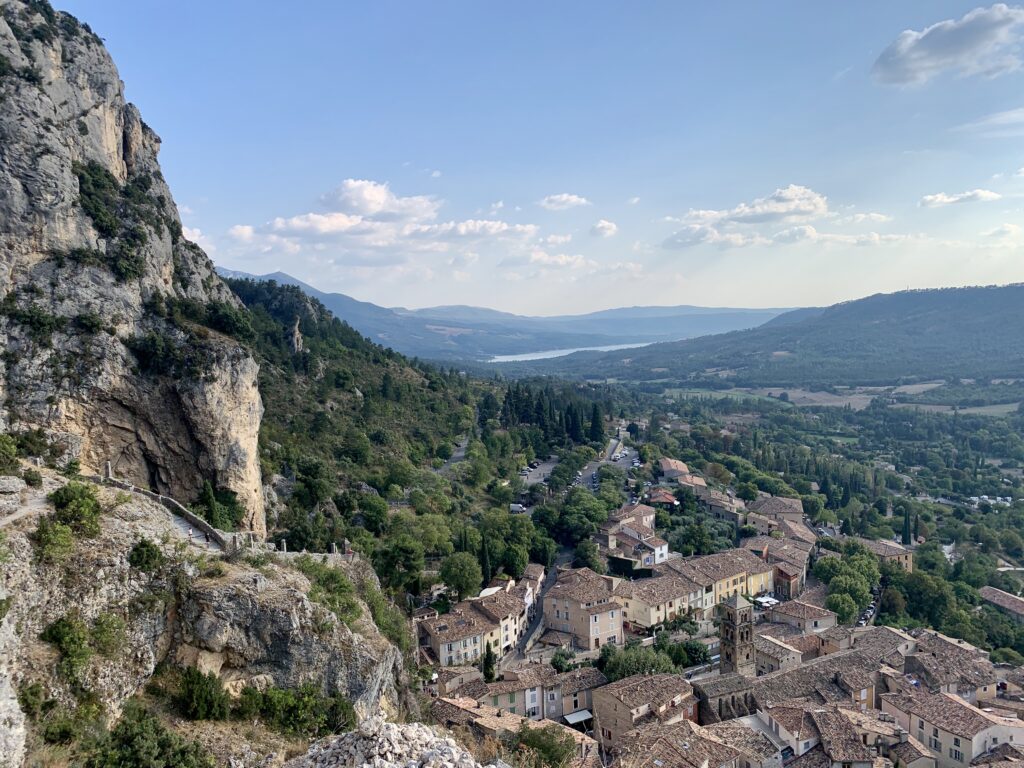
View over the town and the Maire Valley
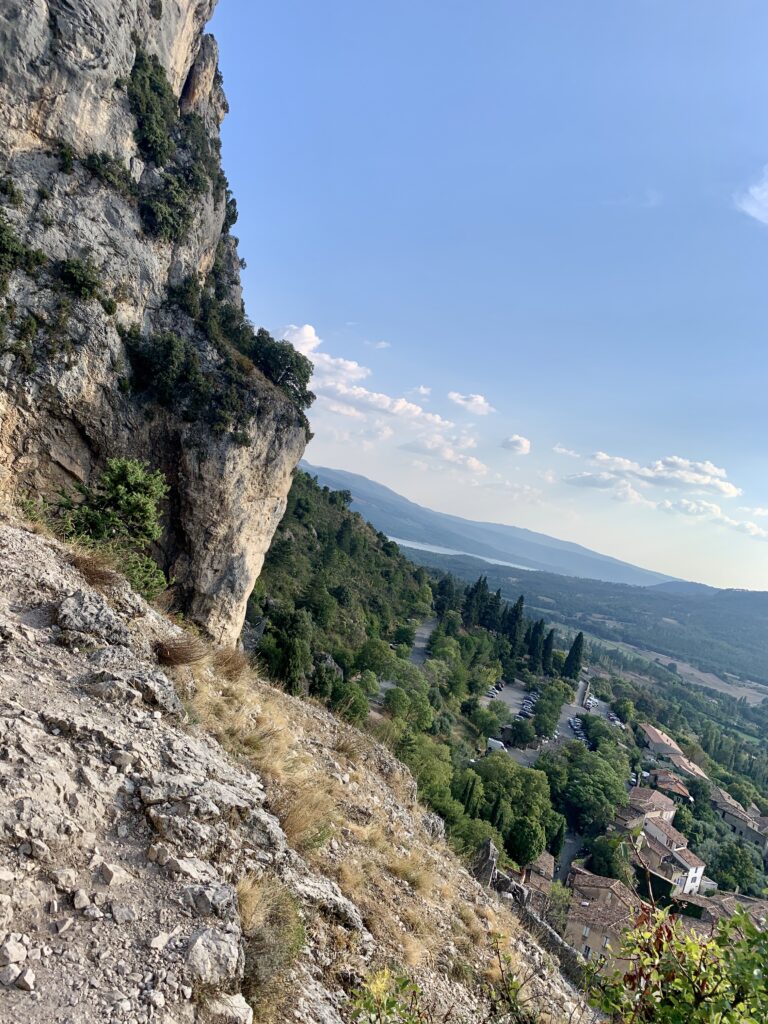
The left hand path… 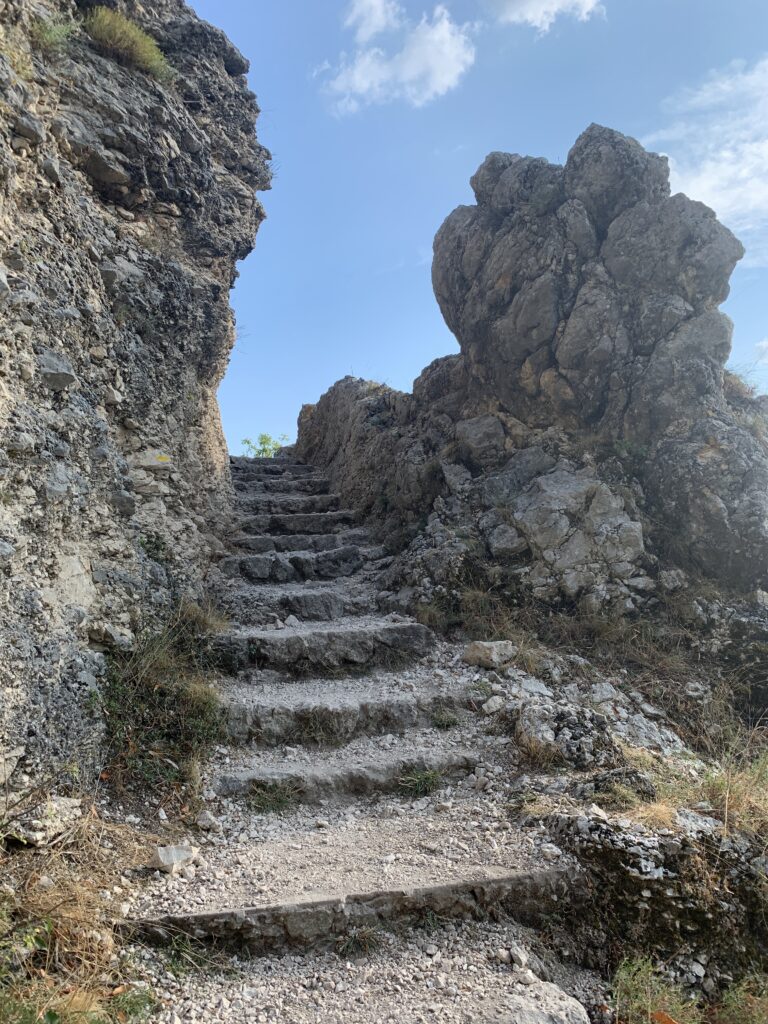
… not so difficult

It was first built in the 9th century but the oldest part remaining today is the nave which was built in the 13th century. It was a popular pilgrimage centre in the Middle Ages and in the 17th century was known as a chapel where still born children would return to life for the time it took for them to be baptised and their souls could go to heaven.

Approach, 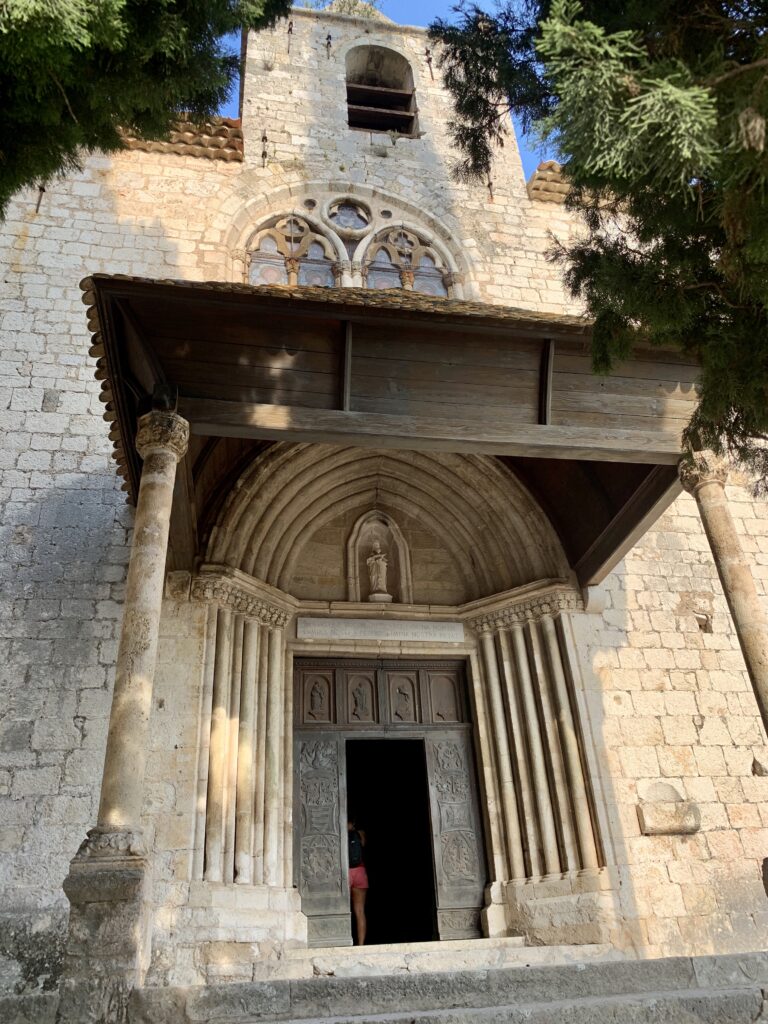
Entrance, 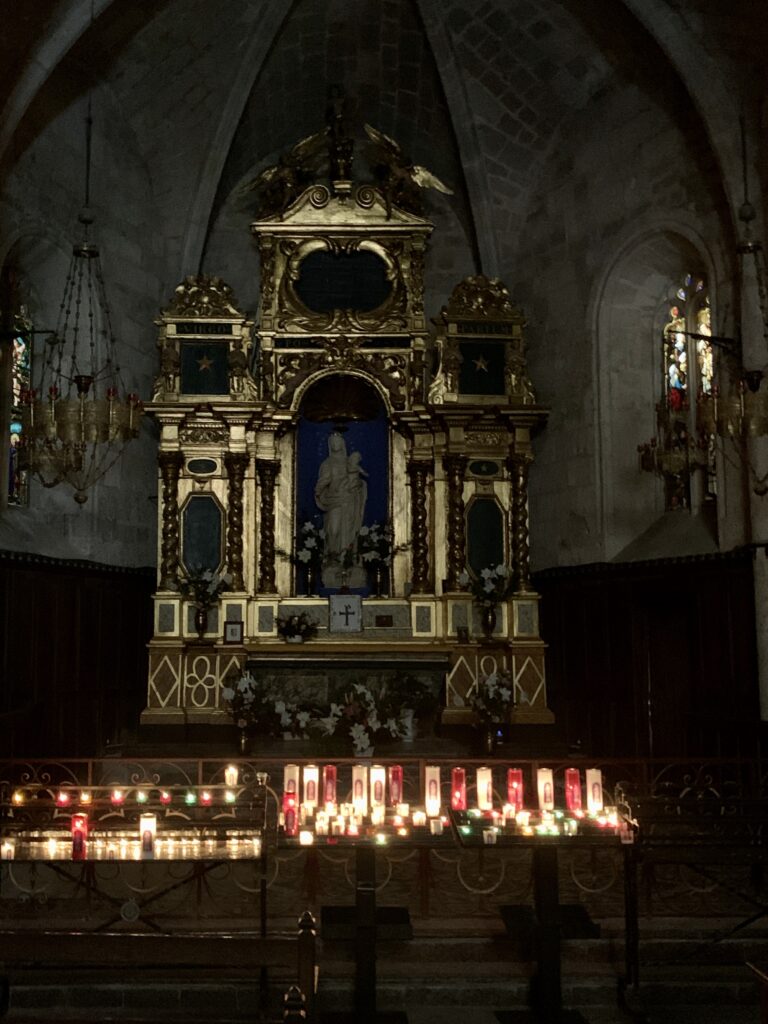
Inside
Before tourism, Moustiers was largely about pottery. It is famous for it’s Faience Earthenware. There’s an earthenware museum in the village holding a collection of this fine glazed earthenware some of which dates back to the 17th century. Faience Pottery is made to this day with the village operating 14 workshops and 22 sales outlets. Vanya gave the museum a miss, preferring to visit a workshop and buy some new Faience Pottery rather than just look at the old stuff. And what did she buy? A glazed wine cooler. What else?
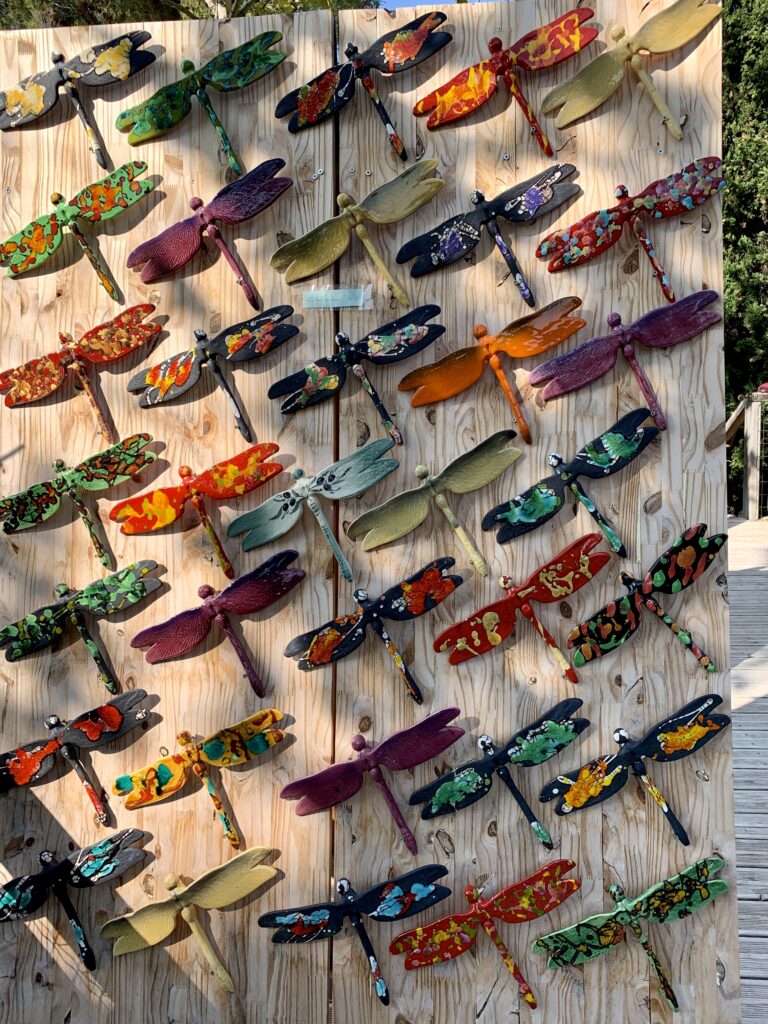
Faience Earthenware (Dragonflies) 
Faience Pottery (My Favourite)
We returned to the village early that evening so as to be certain to get a table in a restaurant (like I said, the place is busy) and thereafter enjoyed a lovely meal on a packed restaurant terrace – the wine was cheap and the food was good; mine was a Wild Boar Stew cooked in Lavender Honey. We were pretty much the last people to leave. Nothing wrong with that.

Looking forward to this… 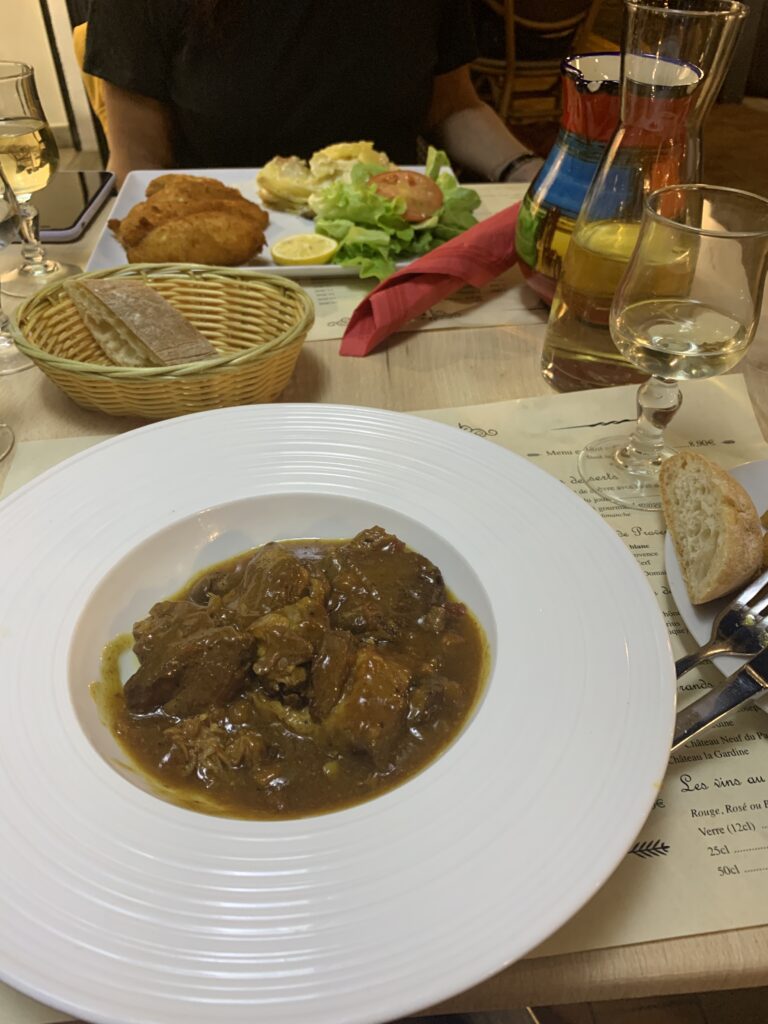
… and there’s the Boar

